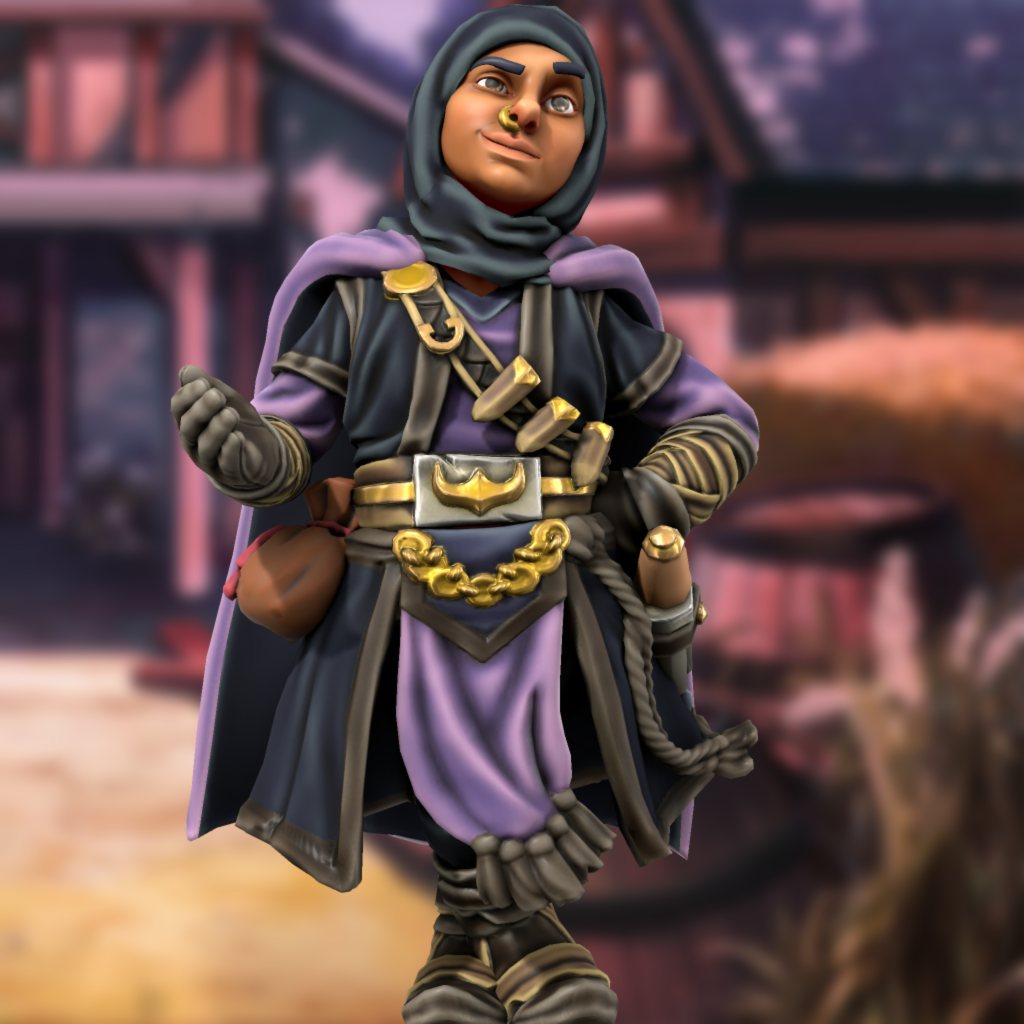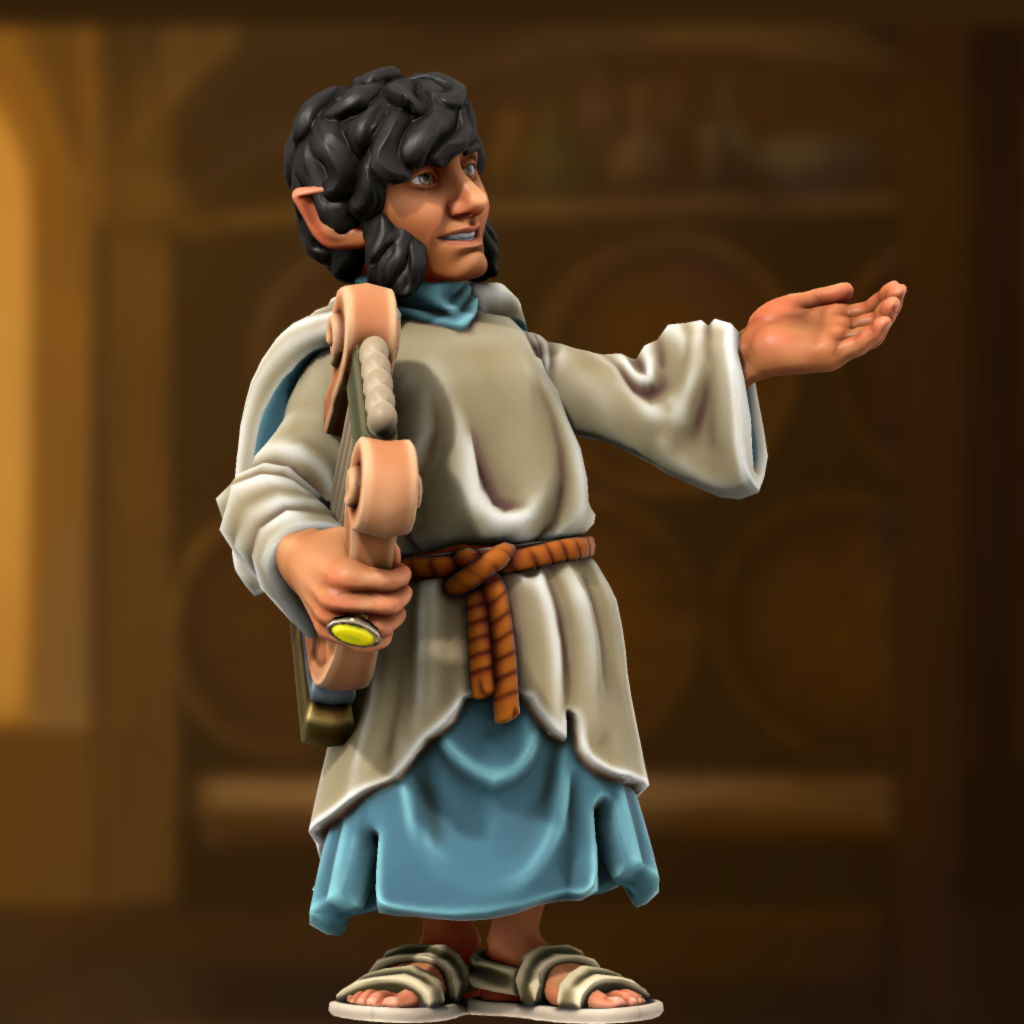Oamenus (/waˈmeni/)
Oamenus is the endonym of the race more commonly known across Tel as "Halflings," a term the Oameni consider derogatory. Culturally, the Oameni are itinerant nomads, with a history of migration all over Tel that spans over two millennia. According to Oamen folk history their original homeland was once situated in northern Dhenia, but after losing a war to the Alvian kingdom of Vanadesha, they were exiled from their homes and forced to scatter across the world. As such, the Oameni have been forced to survive in strange lands and live among unhospitable indigenous peoples. Due to discrimination and lack of economic opportunity, many Oameni have had to navigate the criminal underworld to meet basic needs; this has led to the Oameni being unfairly stereotyped as a race of rogues and scoundrels.
While a history of disenfranchisment has forced many Oameni to survive through larceny and other crimes, the majority of Oameni who are fortunate enough to have settled in lands where they enjoy a modicum of toleration are employed in lawful trades. Many Oameni work as musicians, singers, and dancers. Despite their disposition for a nomadic lifestyle, many oameni have settled into "Halfling Quarters" found in various cities and towns across Tel, where they seek to scrape up a living honestly or through less law-abiding means.
The Oameni are known for having a vibrant culture of storytelling and music. Wit, curiosity, and cunning are characteristics valued by this people. Physically, Oameni stand around 3 feet in height and weigh an average of 40 to 60 pounds with stout builds. They tend towards having swarthy complexions, with curly hair on their heads and feet that range from black to a ruddy-brown or copper. Their small frames lend Oameni a natural manual dexterity and advantage in moving quietly. The average lifespan of a Oameni is approximately 130 years for males and 150 for females.
While the study of Arcane Philosophy has not been historically popular in Oameni culture, they are known to have individuals who can harness the Ar through Theurgy.
Additional Information
Facial characteristics
The facial features of most Oameni tend toward a round face with full lips and an aquiline nose. They also possess slightly almond-shaped eyes. Oameni men often will grow out their sideburns, but full beards or mustaches are rarely able to be grown.
Civilization and Culture
Naming Traditions
A Oameni will have four names: a family name, a clan name, a Mătăhălos name, and a Oameni name. Since their exile from their homeland, the Oameni have been forced to sojourn throughout various nations and cultures on Tel, as such, they have found it convenient to adopt the naming traditions of the majority culture in the area they reside. Hence, a Oameni will often have two given names, one he or she uses with mătăhălos and one used within the Oameni community.
Major Language Groups and Dialects
Culture and Cultural Heritage
The Oameni have a long tradition of song and dance that is appreciated by other peoples on Tel.
Common Customs, Traditions and Rituals
As a result of a long history of displacement and wandering in strange lands, the Oameni have found it advantageous to organize themselves into several clans (varda).
Common Taboos
Common Myths and Legends
The main deity of the oameni is Asdona a fertility/nature goddess who is seen as the matriarch of the entire oameni race. Additionally, Cesdia (agriculture/love/weather), Bennos (earth/death), Dhureus (defense), Lysdar (theives/stealth/curiosity), and Elene (friendship/trust/hospitality/home) are other deities also worshiped as part of the oameni pantheon.
Interspecies Relations and Assumptions

Oameni males are disposed to have stout builds, with a paunch that grows at middle age, while Oameni females tend towards full-figured, plump physiques with callipygian hips.
Oameni complexions range from ruddy to slightly tan, with most possessing an olive complexion. For both sexes, Oameni hair is typically wavy, and can range from a deep black to a copper-reddish color, depending on skin tone.



